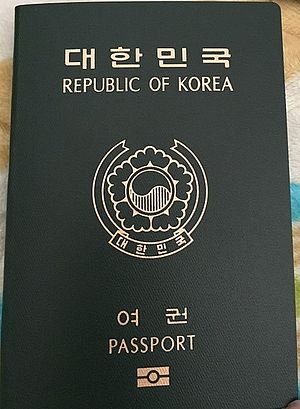As a South Korean passport holder, I sometimes receive an unexpected question when travelling abroad and needing to show my passport to others: Are you South Korean or North Korean?
The confusion probably comes from the fact that a South Korean passport says “Republic of Korea” on its cover instead of “South Korea.” Meanwhile, passports from North Korea say the “Democratic People’s Republic of Korea” instead of “North Korea.” It can be confusing if you have not been paying close attention.
This confusion is likely to become rampant with the South Korean government planning to change the color of its passport from the current green to dark blue, which is also used for North Korean passports. It’s a merely early step, but if the plan progresses further, passports from the two Koreas will look even more similar in the future.
The new design for South Korean passports is expected to be introduced starting in 2020, and the government is currently taking stock of public opinion before making a final decision.
Many worry that this plan would undermine the international value of a South Korean passport, which is the second most powerful passport in the world in terms of the number of countries with visa-free access. People with a South Korean passport can travel to a total of 122 countries worldwide without a visa. In contrast, a North Korean passport allows its people to travel only 11 countries without a visa. There is a huge gap between the two passports.
Some are unhappy about the new passport design because they believe the change is due to the current government’s “pro-North Korea” ideology. Others say the new design and color fail to demonstrate South Korea’s identity.
Sohn Hye-won, a Seoul-based lawmaker of the ruling Democratic Party of Korea who used to be a brand promotion expert, is part of the latter group. Sohn said the most important piece is to make South Korea’s passport distinguishable and recognizable for people, but the new design lacks any individualizing features.
Clearly, critics having their reasons for disliking the government’s plan. But it’s worth a closer look to see how valid these arguments are.
According to the Passport Index, which publishes passport information for each country, passport covers around the world are divided into four colors: red, green, blue, and black.
Among them, 78 countries use blue, including dark blue, for their passports. Reds and greens are used for passports in 68 and 43 countries, respectively, with black as the least popular option, used by only 10 countries.
Countries that issue blue passports include the United States, Canada, Brazil, Argentina, Paraguay, and Australia. After Brexit, the U.K. is expected to rejoin the blue club.
Passports with red covers are used by most EU members, except for Croatia. Many countries with a communist history, including China, Russia, Romania, Poland, and Serbia, also use red for their passports.
Green, the current color of the South Korean passport, is used mostly by Muslim countries including Morocco, Saudi Arabia, and Pakistan.
Among the countries that use black passports are Angola, Chad, Congo, and Malawi. New Zealand also uses a black passport.
This is simply to say that North Korea is not the only country in the world that uses blue for its passport– and that there is no special reason to associate green with South Korea’s passport.
Plus, the online rumors about the background of the government’s decision to change the passport color — that it is meant to signal closer ties to North Korea — are unlikely to be true.
The new design is based on the work of Kim Soo-jung, a professor of the design department at Seoul National University, who won the “Passport Design Contest” jointly organized by South Korea’s Ministry of Foreign Affairs and Ministry of Culture, Sports and Tourism in 2007. Plus, “the design from the co-winner of the contest also used the blue color,” said Yoon Hee-chan from the foreign ministry.
That means the decision to switch from green to blue was made over a decade ago. Yoon explained that “the plan to change [the passport design] has been delayed as the government wanted to wait until 2020 when the most currently issued passports expire.”
Eventually, the color of the new passports may change, depending on the results of an online preference survey targeting the public
As mentioned above, the government is currently gathering public opinion regarding its decision to introduce a new color for the passport. After examining preferences, the government will decide whether to differentiate different types, such as diplomatic passports, by color, or whether to use just one color, whether that is blue, dark grey, or red.
In other words, it is probably early to raise concerns as the final decision on the color has not been made.

































